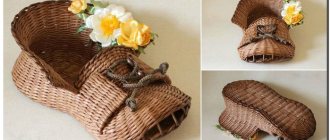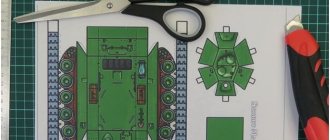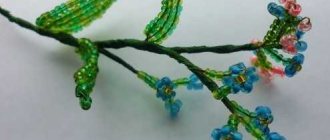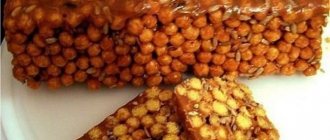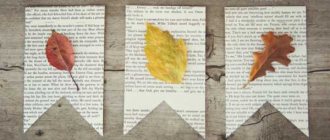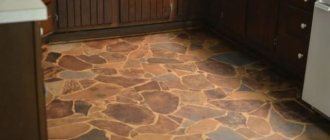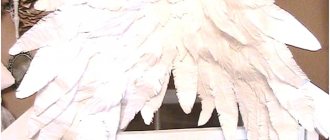How to sand wood correctly
When the part is ready, its surface should be carefully sanded.
For solid wood parts, it is customary to smooth out saw cuts or remove traces of glue, sand down areas where chips have broken off, or smooth out protruding wood fibers with the finest sandpaper before the wood is covered with stain or varnish. Even cladding made of plywood or veneer, which has an almost smooth, flawless surface, can be varnished without preliminary sanding only as a last resort.
Panels and parts made of solid wood may have almost imperceptible irregularities, which will become clearly visible after applying varnish, stain or other protective agent.
It is clear that sanding should not lead to the appearance of new scratches and grooves. You will avoid this danger if you use the correct sandpaper and block for your product.
Cycling
When planing blanks made of solid wood, more or less noticeable grooves remain after the plane. The best way to eliminate them is cycles.
Many home craftsmen prefer to process surfaces with just a scraper and completely abandon sandpaper. A well-sharpened scraper can clean planed surfaces and give them an almost flawless appearance.
The cycle is a metal rectangle with a cutting edge sharpened at a right angle, which is passed along the surface. The cutting edge becomes dull, so it needs to be sharpened from time to time.
First, a chamfer (the beveled side of the cutting part) is ground on a whetstone or wheel, then the grinder is turned over, placed flat on the whetstone, and in this position it is driven along the stone in straight or circular movements, grabbing the cutting edge of the edge.
When working, take the cycle with both hands so that the thumbs are in the middle of the edge facing you. Always place the cycle at an angle and guide it in the direction of the wood fibers.
Use the scraper only on solid wood, plywood or veneer. Particle boards quickly dull the cycles and leave nicks on them.
It is better to use sandpaper to process putty surfaces.
- Cycles smooth out unevenness left by a plane or protruding wood fibers.
- Moistening the wood and applying primer
- Whether you use scrapers or some other method, in any case, before sanding the surface of parts made of solid wood or lined with plywood or veneer, it needs to be moistened.
To do this, it is better to use warm water (you can even use hot water if the part is made of solid wood). Then you need to wait until the parts are completely dry. Small dents will disappear when exposed to water.
But the cut wood fibers, pressed to the surface of the part before they are moistened, swell and, having dried a little, stand upright. Therefore, the surface, which seemed impeccably smooth before moistening, often becomes rough and fleecy.
- After sanding, the surface becomes smooth again.
- Primer for quick sanding
- The surface of a wooden part, regardless of whether it retains its natural appearance or is covered with stain or varnish, is primed.
- The primer closes all the pores, as if sealing them.
- As a result, the hygroscopicity of wood is reduced, and the paint applies better and more evenly than on an unprimed surface.
Make sure that the room you work in is dry, dust-free and not too cool. This way you will create ideal working conditions. It is more convenient to apply the primer with a soft flat brush.
The primer dries in about half an hour. But wait at least an hour before you start sanding the primed surface with the finest grit sandpaper (no. 240). Work only in the direction of the wood grain, change the sandpaper often and knock out the fine dust that forms during sanding.
The surface, which seemed impeccably smooth, became rough and fleecy after moistening.
Using a flat brush, carefully apply the diluted primer onto the prepared surface.
Sanding smooth surfaces
When sanding smooth surfaces, it is important to use sandpaper correctly: sandpaper that is too rough will scratch the wood, sandpaper without a boss will sand the surface unevenly. The boss ensures an even fit of the skin to the wood over a relatively large area.
Usually a cork boss is used. But a small wooden block with even, smooth edges will do just fine.
You can also use special holder pads made of hard rubber or plastic: they consist of two parts - upper and lower, between which sandpaper is placed.
First rough, then fine
To clean rough cuts with a saw, use sandpaper with a coarse abrasive coating (100 grit). Planed surfaces are sanded with 120-grit sandpaper. For fine, final sanding, use 180- or 240-grit sandpaper.
Sand the wood all the time in the direction of grain growth and without excessive force. Experienced craftsmen avoid working surfaces with sandpaper for a long time, and their movements are very light, almost without pressure.
As a result, the tiny ends of the fibers are only pressed against the surface, but are not cut off.
A special grinding device is the so-called “sand plates” of different sizes and grain sizes. Each is a steel plate with tiny “pins” protruding from the surface with sharp edges.
When grinding with such a plate, due to the large distance between the pins, a lot of sawdust is formed, and their cutting edges remain sharp for a long time.
In practice, “sand plates” are noticeably more “aggressive” than ordinary sandpaper.
If the surfaces of large parts are sanded by running a boss wrapped in sandpaper over them, then when processing small parts they proceed differently: a piece of sandpaper of a suitable size is secured on a workbench with strips of tape and the part is passed over the sandpaper. This avoids rounding of the edges. Before proceeding with further processing of the part, after grinding it should be thoroughly cleaned of dust.
When sanding smooth surfaces, use a special pad so that the sandpaper is evenly pressed against the wood.
Small parts are best sanded by running sandpaper on a workbench.
Auxiliary devices made of cork and plastic for fixing sandpaper. “Sand plates” are glued to the handle plate.
Curved lines and profiles
Sanding difficult edges and profiles requires special flair and the right sanding tool. A boss with a sandpaper pad will not work here. It is often more convenient to work by simply taking the paper in your hand and holding its edges between your fingers so that they do not scratch the part.
When processing parts of complex shapes, it is advisable to use homemade “files”. They are made as follows. Narrow strips of sandpaper are glued onto strips or round sticks. With such “files” you can cleanly process the smallest curves or the narrowest recesses on turned parts.
Sanding sponges, which are sold in hardware stores along with sandpaper, are well suited for sanding rounded surfaces.
The sponges have an abrasive coating of coarse, medium or fine grain on both sides, and a thin soft spacer between the coatings gives the sponge special flexibility and elasticity.
There are also sanding sponges that are thicker and quite rigid: they are designed for sanding smooth, defect-free surfaces.
Wood dust is removed from the sponge by squeezing it. You can also wash the sponge, but wait until it is completely dry before using it again.
The sanding jaws are so flexible that they fit tightly around any curve and even multi-stage profiles.
If you hold the sandpaper with your hand, be careful not to let the edges of the paper scratch the wood.
- Sanding "files" can be made from strips of suitable sandpaper glued to strips or round sticks.
- Roundings
- The processing of a wooden part is usually completed by slightly rounding its edges, that is, the sharp edges of the transitions from one plane to another or from the front to the end surface are slightly ground down.
Be very careful and careful when performing this work, as the sharp edges of the part can cause injury. Do not make sudden movements when turning the part over, which could cause it to hit some hard object and, consequently, cause damage.
After completing the roundings, the treated surface can be varnished. Note that on the rounded edge the varnish lays down in a uniform film and adheres better, whereas on the sharp edge of the transition from one plane to another this film is very thin and often breaks.
Perform roundings using sandpaper only with a boss, which is directed at a 45-degree angle to both surfaces. The boss ensures uniform grinding and rounding.
DIY sandpaper block
DIY sandpaper block
Do-it-yourself grinding devices (grinding stone) Do-it-yourself
- GNTI - sandpaper bar board for sandpaper - Video reports from the world of science and technology
- #image.jpg
- DRUM FOR SANDAYING WITH YOUR OWN HANDS. Drum nazhdachkoy OWN HANDS
- #image.jpg
- Wood Finishing Basics
QUALITY Planer long with Velcro, yellow (pcs.), art. 8896
Sanding paper block (100x230mm)
Grinding stones, graters
#image.jpg
Sandpaper holder for telescopic rod, plastic. 210x105 mm priced from 324 rub. per piece
Grater
Sanding block 210*105
Adjustable wrench, sandpaper and chisel: description of tools and recommendations for selection
- How to sharpen knives - 7-step instructions for beginners with photos and videos Economy Kitchens
- #image.jpg
- Sanding block 290x75mm (OTRIX) SB-3 – OTRIX buy – “Denzzy”
Sanding block with clamp, 10.5×21cm
#image.jpg
NEWSPAPER “PLANET OF HUNTERS AND FISHERS” Shop Armory Yard. Gun store, goods for hunting and fishing.
Sanding block paper MATRIX 75830 210x105 mm, pcs () - "Omega Stroykomplekt"
- #image.jpg
- Holder for sandpaper 105x210 mm. Tekhmash 10874-TM Key center
- #image.jpg
- Sandpaper holder FIT 39715, 202 rubles
- Buy FIT plastic grater for sandpaper with metal clamp, 230x120 mm 39735 - METRICS online store
- Original do-it-yourself bookshelf » Super Doka SDoka.ru - Site of craftsmen and handicraftsmen
Source: https://Sqezo.ru/brusok-dlja-nazhdachnoj-bumagi-svoimi-rukami-2/
Wood rasp - what are the similarities and differences with a file? + video
A wood rasp is a file-like tool with a large notch on it. Sometimes it is called a “carpenter’s file,” but still there are differences between the tools; we will study them in this article.
Wood rasp - etymology of the word
Let's start with the most intriguing! The main difference between a rasp and a file is in the notches, which are made separately in the form of teeth or protrusions.
Rasps are made by stamping, that is, holes are pressed into steel sheets with sharp protruding edges. In appearance, a rasp resembles a metal plate with triangular teeth, and in some ways they are similar to the teeth of a grater.
This tool is necessary for processing wood, plasterboard, plastic, rubber, leather and other materials.
often use it when a simple file cannot cope because it becomes clogged with shavings, and cutting is no longer possible . The name “rasp” came into use from the German dictionary.
There is a word “raspel”, which is translated into Russian as “grater”. And even in past centuries in Rus', such a tool was called “derun”, that is, a device for scraping and wiping various materials.
Everyone is still familiar with the potato dish - derun (when potatoes are grated).
The word “rasp” itself is a verb that denotes the process of processing materials with this device. There is a connection between this name and the English dictionary.
The British call this instrument “rasp”, which means “rasp”.
Many believe that this is nothing more than a type of file, and if you delve further into the English dictionary, you can find “rasp file”, and its translation is just file.
What should a rasp set consist of?
A decent craftsman always has a whole set of rasps; we’ll look at what it should consist of just below. Basically, there are these types of rasps: flat (not only blunt-nosed, but also pointed), semicircular and round.
Rasps also differ in the number of notches - 1st and 2nd class. These classes do not differ in length, but the number of cloves in each number is excellent. In the first one, the distance between the cloves is somewhat larger, and the rows are smaller.
There are more notches on the rasps of the second number.
For the manufacture of rasps, durable steel grades U7, U7A are used; steel U8, U10 and others are rarely used. The harder and sharper the teeth of the tool, the better the adhesion to the materials being processed.
The above types of rasps are produced in our country, but abroad there is a slightly smaller variety: regular (with handles) and grooved.
In our country, grooved ones are often called grooved tools; these are two-ended tools with flat metal parts in the center; it is this part that is held during operation.
The size of the grooves is small, and the teeth are of the usual standard size. We briefly took a look at the classification, but now it’s time to learn a little more about each species.
Brief characteristics of rasps
The flat rasp allows processing of concave surfaces. It is especially good for deburring and trimming various workpieces made of wood or non-ferrous metals. Modern flat rasps have comfortable two-component handles with holes for hanging. The main working part is made of durable tool steel.
The round rasps are also equipped with ergonomic two-component handles. This creates additional conditions for comfortable and convenient work. The round shape allows you to process various holes and uneven surfaces made of non-solid materials. These tools are often used to perform many plumbing jobs.
But the semicircular shape of the tool allows them to be used for sawing and cleaning not only concave, but also flat surfaces. Large diameter holes are also processed with such rasps. To make it more convenient to work, a two-component handle is made.
Technical brushes
Technical brushes, like sanding tools, are used to remove rust or oil stains. They are a handle to which bristles made of metal or nylon are attached. Hard metal rods will remove everything unnecessary from the surface; nylon brushes are designed for a softer treatment. Of course, there can be no mention of any finishing touches. Working with a technical brush is an intermediate or preparatory stage of work.
Wire brush
In everyday life, at work, or on the Internet, you can come across other names for technical brushes: brush brush, cord brush, brush brush or metal brush.
To the list
Sanding wood products by hand
Sanding wood is a very important step in finishing furniture. You cannot do without sanding before painting; you will not get a high-quality and beautiful product. I’ll say right away that I use a whole set of power tools for grinding. These are grinding machines, a grinding disc, a drum with replaceable sandpaper, and an ShLPS - a belt sanding machine. There are also attachments for a drill and a manual belt sander - a machine. And with all this set, manual sanding still takes a lot of time.
I wrote a post about homemade devices: Homemade grinding machines and devices. Electric grinding tools greatly reduce work time, and in many cases give better results than manual grinding.
But it’s not just smooth surfaces that have to be sanded. Corners, edges, milling, and other places that cannot be reached with a large tool still have to be sanded manually.
And most importantly, buying a set of tools for home use is expensive, and sometimes there is simply nowhere to place it.
Perhaps everyone knows the main device for manual sanding; it is a wooden block wrapped in sandpaper. This block is used for sanding smooth surfaces. Usually the skin is nailed with small nails on the sides.
But sandpaper is a consumable material and needs to be changed often. It's not much fun to tear off nails and nail them on a new one each time.
A specially made block will help here, or rather not just a block, but a block with elements holding the sandpaper.
There are several options for attaching the skin. A fairly simple way to fix the sandpaper with wooden wedges on both sides of the sandpaper. To do this, two cuts are made in a wooden block, and wedges must be made or selected for these cuts. Moreover, the cuts themselves and, accordingly, the wedges can be of very different shapes.
I use not only even bars. To sand bent parts, I make the sole of the block of the appropriate shape. Often the concave part of the part cannot be sanded out with anything else. Old carpentry manuals suggest using files to finish shaped parts. But I don’t use files; they clog quickly and are difficult to clean.
To sand curly edges that are difficult to reach even with your hands, I use the same sandpapers. For finishing, instead of a file, I take large sandpapers of 25-30 no. I select a long block of the desired shape, for example round, flat, oval.
I wrap sandpaper and process the parts like a file. You can make such a device for permanent work. For example, as in the picture, the sandpaper is fixed on the working part of the tool, and can be easily changed if necessary.
In the pictures you see options for bars with different working surfaces. For sanding grooves, straight and rounded. Most people use wooden wedges to secure the skins.
But you can attach the skins in other ways. The sandpapers are fixed with special spring claws with teeth, such as on the same sanding machines. I have even seen such devices in stores.
You can choose and make for yourself any option, any shape and size.
Another option is to attach the skin between two platforms, upper and lower. In this case, the platforms must fit into each other.
- General recommendations: When sanding flat, even surfaces, use sanding blocks; you just can't sand it smooth by hand.
- Try to sand along the grain; sanding across the grain leaves deep scratches, which then need to be sanded out again.
- Start sanding with coarse sandpaper, I use #20-25.
After leveling and sanding the parts with coarse sandpaper, you need to finish sanding with fine sandpaper No. 12 or No. 10. I rarely use finer sandpaper. Review of electric tools in the article grinding machines.
When sanding, it is highly recommended to use a respirator, especially if you are working with an electric sander.
Source: https://mastervdome.ru/instrumentyi-i-prisposobleniya/shlifovka-derevyannyih-izdeliy-vruchnuyu/
Sanding mesh
Sanding mesh is an evolution of sandpaper. It is used in the same way as sandpaper, but the mesh has its own undeniable advantages.
Sanding mesh
Since the mesh is made from fiberglass, it is more durable and is not afraid of water. The abrasive is applied to both sides, which increases the service life of the material. True, sanding with a mesh without gloves will be very inconvenient. But the cells prevent the mesh from becoming clogged with dust. When working, it is sometimes enough to knock the dust off the mesh to continue sanding.
Sanding mesh and paper can be purchased in rolls or cut sheets. The sheets are often made to fit specific sanders, both manual and mechanical.
To the list
Do-it-yourself sandpaper or wood file
Sometimes it’s more convenient to make the instrument yourself, rather than looking in stores for something that might be there.
It would seem, why is it needed if there is a rasp for processing wood? But in many cases this is an overly rough tool that does not allow obtaining a sufficiently high-quality surface.
Meanwhile, it’s quite easy to make a file for wood.
In order to make a file for wood we will need:
Sandpaper, type - sheet, width - 230 mm. length - 280 mm, grain size - P180-26ru6. Sandpaper, type - sheet, width - 230 mm, length - 280 mm, grit - RUB 180-63. Titebond glue 118 ml —237 rub.
To do this, select a flat, smooth board with approximate dimensions of 10 by 50 by 400 millimeters. We glue sandpaper on both sides of it, as shown in the attached figure.
It is most convenient to use epoxy resin as glue here.
It is advisable to have coarser sandpaper on one side and finer sandpaper on the other.
A few words about abrasives. In our case, it can be used on both paper and fabric bases. It is marked on the reverse side. According to the ISO classification, it is divided from P22 (coarse-grained, with a grain size of 800-1000 microns) for very rough work, to fine-grained, used for polishing, with grade P2500 (grain size 3-5 microns).
It is advisable for us to put P90 or P100 on one side, and P120 or P2D0 on the other.
At first glance, it may seem that such a tool is short-lived. But in fact (when used specifically for woodworking) it will serve the home craftsman for years.
And most importantly, they are very convenient to work with: rounding edges, accurately adjusting lugs, spikes, etc.
The sawdust clogging the sandpaper is removed - shaken out by lightly tapping it on something with the end of the file farthest from the handle.
A wooden file is easy to make without glue. The block can be covered with sandpaper, securing it with screws. We use a piece of timber 50 by 50 mm. Or a piece of board, in which case there is no need to make a handle. The sandpaper-covered block is comfortable to hold in your hand. It is useful for sanding plywood, foam plastic, etc. A kitchen knife is sharpened on such a “block.”
DIY band saw for woodworking (photo)
Do-it-yourself wood file – photo
Drawing and photo by K. Molchanov
Tools for craftsmen and craftswomen, and household goods are very cheap. free shipping. recommended - 100% verified, reviews available
Below are other entries on the topic “How to do it yourself - for a homeowner!”
- DIY modular flower stand (photo) Unusual modular flower stand…
- DIY screwdriver with replaceable tips How to make a screwdriver with replaceable…
- Do-it-yourself sign for a fence or gate How to make a “decoupage” sign for…
- Hallway from an old wardrobe with your own hands How to make a set of furniture for…
- Do-it-yourself shoe drying shelf: PHOTO + DRAWING HOW TO MAKE A SHELF DRYING RAIL FOR…
- Chest decor in the Provence style: DIY vintage DECOUPAGE AND CHEST DECOR IN...
- How I built a canopy for relaxation at the dacha with my own hands A canopy for a summer holiday with my own...
Source: https://kak-svoimi-rukami.com/2017/02/shkurnyj-napilnik-ili-napilnik-po-derevu-svoimi-rukami/
Non-woven sanding fiber (Scotch-Brite)
Material for the most gentle sanding. Scotch-Brite is created by weaving synthetic threads onto which an abrasive material is applied. The structure is similar to felt, but in essence it is the same as abrasive sponges for washing dishes
Description for the picture
Scotch-Brite is actively used in car repair. And this is not surprising, because the abrasive fiber does an excellent job of removing metal chips and finishing polishing. Non-woven sanding cloth is available in sheets, wheels and rolls. Differences in grain size are reflected by the color of the material. Green Scotch-Brite - the coarsest material, treatment for applying putty, P180-240; red – finer-grained, P240-P360, treatment for applying primer; gray – used for matting before applying paint, grain size from P600 to P1000; orange – the finest grain, from P1500.
To the list
